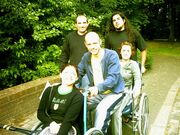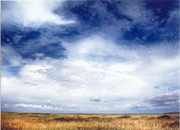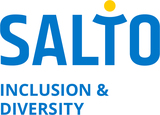Traveling in a Mixed-Ability Group
- Find this and more in the SALTO Inclusion for All Booklet: No Barriers, No Borders
A group challenge
More time for travelling also means more time in a situation in which you need to take care of your participants' needs (food, medication, toilet, security,...) within external constraints (departure times, taking off, assigned seats,...). As for all journeys, it is advisable to get travel-insurance on top of your usual health-insurance, adapted to the needs of your group.
Having your own adapted transport or renting adapted vans/buses is of course easiest, but maybe not the cheapest or the most authentic when you want to experience some real travelling. Also far away destinations are more tedious to reach by car or bus. A not so social option would be to have the persons in wheelchairs arriving separately by adapted transport while the rest go by train or plane. It is advisable though to make it a group challenge to travel together as a group as far as possible - and in the process become aware of the fact that many transport facilities are not adapted to persons with less mobility 'yet'.
Going by train
Nowadays, many railway stations are equipped with ramps to make the trains wheelchair accessible. However in many cases you need to make a reservation to get this assistance, and the assistance might be limited to certain hours of the day and to certain railway stations. So check in advance! If you're planning on last minute changes to your travels, and you have participants in the group using wheelchairs, you might want to practice lifting the person in appropriate ways to get them on board. Usually the person in the wheelchair (or the parents/carer) knows how to do this. One detail, if you are talking about electric wheelchairs, you might easily lift the person, but the wheelchair will be too heavy to lift. Also check if the station actually has lifts to get you onto the platform...
Flying with disabilities...
Airlines generally provide special assistance for passengers with reduced mobility or ill passengers, however this needs to be booked in advance or even better when booking your flight ticket. Check with the different companies what they offer and how that affects your travel. Persons with a disability can sometimes check-in at a special assistance-counter and get priority boarding, however this also means that you need to be at the airport earlier than usual. It is generally possible to reserve wheelchairs, if some of your participants are going to have difficulties walking long distances through big airport terminals. You might also need more transfer time if changing planes - unless the company offers you a special van that brings you straight to the next plane.
People in a wheelchair who cannot walk at all are carried aboard (before other passengers) strapped onto a narrow chair with wheels which fits through the aisle of the plane, while your wheelchair is stowed in the hold. During the flight there are only limited opportunities for moving around (only some long-haul flights have adapted toilets, so you better go before boarding, or take precautions). At disembarking, the ground staff will come and pick up the persons using wheelchairs after all other passengers have left the plane, with a similar narrow chair on wheels, and your wheelchair should be waiting for you at the door of the plane. People who have never travelled might find this an unpleasant experience to be taken out of their wheelchair by airport staff and rolled on board. You might want to discuss this beforehand to put it in perspective and know what to expect. Do tell the airport staff how they should carry you and how to handle your wheelchair!
It is possible on regular flights (not on low-cost carriers) to order special meals (in case of allergies, vegetarians or religious needs). At check in you can also request a specific seating order (window, aisle) so that you can sit together and assist one another if necessary, or ask to sit in the first row of the plane if you cannot bend your legs. It is not permitted by law for people with reduced mobility or physical strength to sit at the emergency exits.
Generally, larger equipment is not allowed on board inside the plane, unless you negotiate this previously, because it cannot be stored in a safe place on board during take-off and landing. You will need to check it into the luggage hold of the plane. Sometimes it is also possible to take your equipment (walking aid, etc) as large hand luggage and they take it from you before boarding and they deliver it back to you at the door of the plane when getting off the plane. This way you can use it as soon as you disembark. If your equipment is fragile, do tell the staff how to handle it.
- If your participants with a disability plan on travelling more often, there exists a Frequent Traveller's Medical Card (FREMEC), which contains your special needs and requested services. This way each time you fly, you don't need to explain your medical condition again.
- Find an overview of airlines and their policies towards travellers with disabilities at www.everybody.co.uk/airindex.htm
If you are travelling with young people who have behavioural problems or a mental disability, you might need to prepare them for sitting still (seatbelts fastened). In the aeroplane it is the crew and captain that are in charge and they can decide not to take off with unruly or panicking passengers. For safety, the seatbelts should be kept on during take off, landing and turbulence. Maybe you can do a flight simulation to get the young people with a disability (or other participants that are not so much into flying) accustomed and prepared for flying, to avoid panic reactions.
Some airports provide information boards or braille indications for people with visual impairments. In some cases, airlines also allow guide-dogs. Most airlines and airports have a section on 'barrier-free travelling' or 'special assistance' on their websites - or ask in their call centres.
Luggage occasionally gets lost or damaged. In this case you need to file a complaint with the luggage handling company before you leave the luggage pick-up area. The handling company will bring the luggage to your address abroad as soon as it is found and has arrived by the next plane (they will give you a file reference number and a telephone number to enable you to keep track of what is happening). If the luggage is not found after a day or so, the company usually has to give you some money per day to buy clothes and toiletries. Or they reimburse you for the damage done or for the loss of your luggage or equipment. Note that there are official maximum amounts that you will get paid for damage, so it is a good idea to get extra travel insurance that covers expensive equipment!
- In case of loss of luggage (which luckily doesn't happen so often) you will, of course, be some time without your suitcases. Therefore it is important never to put any vital documents, money or medication in the suitcase you check in. Keep them in your hand-luggage. And why not add some toiletries and a pair of socks and undies to be on the safe side.
Local transport
As for local transport (trams, buses, metro), if they are accessible, these companies mostly mention it on their website or documentation. If nothing is mentioned about people with special needs or accessibility, then be suspicious and look for alternatives. But first ring the public transport companies to find out.
- If all this sounds a bit daunting, it doesn't have to be! There is always some trial and error the first time. You could find organisations or people with disabilities who have travelled before to learn from their experiences. But of course everybody is different and will have different needs which you need to take into account.
There are three approaches when going abroad with people with a disability:
- either you double check everything (e.g. organise preparatory or feasibility visits with one or two of your participants with a disability) and refuse anything short of your standards back home OR
- you prepare yourself to be surprised and improvise (of course ensuring minimum health and safety) and go with the flow to make travelling with a disability part of the learning experience for the whole group OR
- or you create a healthy mix of both
- More accessible travel resources (info about accessibility of different cities, different types of transportation, different programmes) at www.emerginghorizons.com/resources/


 The sky is the limit
The sky is the limit
Downloads
The following downloads are available:
- No Barriers No Borders - international mixed-ability projects - 2008 update
How to set up international projects with young people with and without a disability. With lots of tips & tricks about partnerships, funding, working with disability,... Based on SALTO TC Enable 2003
